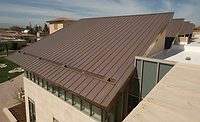Selling More Than Just Roofing Shingles






Too many homeowners think they’re merely buying shingles when they have a new roof put on their house. Not necessarily the readers of Roofing Contractor, but too many roofing contractors perpetuate this myth by merely quoting roofs so much per square of shingles.
It’s not uncommon for consumers to be confused when buying contractor installations. There’s a tendency for potential customers to compare such products to grocery or hardware purchases. Consumers don’t necessarily understand the complexities of a construction system — and why should they?
It's the contractor’s job to communicate what the customer is purchasing. The majority of contracting services and products require a systems approach for proper installation. Consumers don’t necessarily understand the importance of good underlayment, ventilation, etc. By the way, they also don’t understand the importance of paint prep and primers when talking to painting contractors or duct size when installing HVAC. Many customers also assume that when they buy a product that “meets code,” they’re buying the best of the best.
So, how do you overcome this? First, understand that it’s your responsibility to help potential customers determine the difference between you and your competition. If all you do is mail or hand the customer a quote on a sheet of paper, don’t be surprised if the homeowner makes a mistake or merely takes the lower price.
In your own mind, you may also have to overcome your own prejudices that middle- or lower-income families simply need a cheap roof. Selling and buying roofs is no different than selling and buying cars. A household with limited income cannot afford to replace a used car that dies in eight months. Neither can the family afford to replace a roof that leaks in six years because of poor installation or rotting underlayment. Everybody deserves a good roof over their heads, regardless of their economic situation.
Many of you might be thinking, “Sure Monroe, but when I talk technical, the customer’s eyes tend to glaze over.” Understand there’s a big difference between talking technical and confusing the customer with technical jargon. If you’ve ever had surgery, the doctor gave you a brief explanation of what was going to be done, but you didn’t have to read a medical book to “get it.”
Start by listening to your customer. Next, turn the features of roof systems into a benefit for the customer. A feature is a physical or actual part of the roof system. A benefit is something of value that roof system brings to the customer. If you can’t think of a benefit, maybe it shouldn’t be discussed. Examples of features and benefits are listed in the chart above.
So, if a customer told you he or she planned to stay in the house, you might explain ventilation and how the roof will last longer. If you can’t explain a benefit within a couple of sentences or a simple diagram, you’re probably confusing the customer. Don’t be the type of person that when someone asks you what time it is, you explain how to build a watch. People are only interested in what applies to them.
To prove my point, don’t look at your watch and answer these questions. How many colors are on your watch? Second, how many numbers are there? Many people will say 12 when actually there are only four and the rest are dashes, or maybe all 12 are dashes. Ask about time accuracy, and most people can tell. Ask my wife what it looks like, and she can tell you because she bought it with appearance in mind. Ironically, it may not work or even be wound because it wasn’t bought for the purpose of telling time.
One of the best ways to explain a technical component of a roof system is to simply use visual aids. Many diagrams and videos are provided by manufacturers. Keep it simple and talk about what’s important to the customer. Remember, you’re not just selling shingles, and your customers aren’t just buying shingles — they’re buying integrated roof systems.
Looking for a reprint of this article?
From high-res PDFs to custom plaques, order your copy today!









